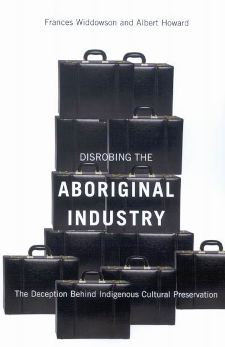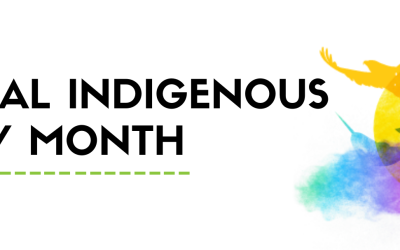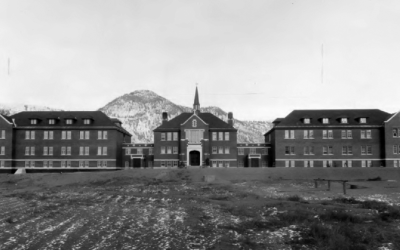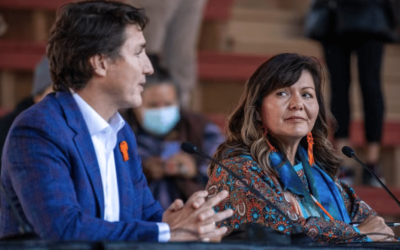Indigenous politics in Canada involves a long drawn-out expensive processes designed not only to extract taxpayer dollars but also to block oversight and control narratives. Because of this, over the last several decades an expansion of a vast infrastructure of dependence has rendered the nation incapable of dealing honestly and fairly with Indigenous Canadians.
It matters little whether one views the specific rent-seeking processes of the Aboriginal Industry as deliberately contrived and conspiratorial, or as an emergent consequence of the unique relationship between politicians, some activists, and the media. What does matter is that too many of these processes perpetuate themselves without benefit to anyone, especially not to people living on reserves and the many responsible chiefs and bands who realize that their funds come from taxpayers. Some processes were set in motion decades ago, and some have appeared more recently. Encroachment and expansion are their hallmarks, and these processes often achieve their objectives by discarding the truth and weaving narratives designed to provoke expensive calls to action. These calls to action result in the establishment of still more investigations, committees, sinecure offices, symposia, ceremonies, etc.
Why does no one challenge this? What is gained from virtue signalling which throws the nation and Canadian taxpayers under the bus? Is defending Canada’s history fraught with such pitfalls that politicians and the legacy media simply dare not venture outside the accepted Overton window of discourse?
While it is impossible to get inside the minds and motives of the various players, it is possible to inform Canadians that these rent-seeking processes have failed in the past, that they continue to fail, and that they offer no meaningful assistance to indigenous Canadians as a whole. Rather, they enrich some people at the expense of Canadian taxpayers and other Indigenous people.
The suffering of Indigenous people is central to this rent-seeking. The fact that some remote Indigenous communities lack clean drinking water is used to justify increased expenditures on unrelated matters, as does the search for unmarked graves across the country. Both Indigenous and non-Indigenous Canadians are thus trapped in a cycle in which there are clear incentives to prolong Indigenous suffering since it is inextricably linked to the expansion of government transfers of funds and self-governing powers. Without the suffering, there could be no Aboriginal Industry.
On May 18, 2022, the Office of the Parliamentary Budget Officer (PBO) released a damning report detailing the failure of decades’ worth of government intervention into the lives of Indigenous Canadians by Crown-Indigenous Relations and Northern Affairs Canada (CIRNAC) and Indigenous Services Canada (ISC). In an op-ed for the Globe and Mail, historian Ken Coates concluded:
“Put bluntly, Canada is not getting what it is paying for – and what’s worse, the massive spending is not improving lives in Indigenous communities.”
Tom Flanagan had made a similar point in 2018 about the failure of this massive federal spending to improve Indigenous lives in a paper published by the Fraser Institute on a little known aspect of the Aboriginal Industry. By November 15, 2017, $5.7 billion had been paid out by the federal government for what are called “specific claims” related to treaty obligations, but the results had been of little or no benefit to many First Nation communities based on the Community Well-Being index. Flanagan wrote:
“There is little statistical evidence that obtaining settlement of a specific claim makes a First Nation better off. The average Community Well-Being (CWB) index of First Nations that have received settlements is exactly the same as those who have not.”
“Because of the increasingly favourable legal environment, the growing value of awards, and the possibility of receiving a subsidy for costs, First Nations are finding it ever more profitable to pursue specific claims. Specific claims are money-makers in the aggregate, even if some are unsuccessful, which helps to explain the seeming paradox that as old claims are settled, even more new claims appear.”
Yet despite these depressing results, the steady expansion of the Indigenous grievance industry continues. During the years of its mandate, the Truth and Reconciliation Commission’s budget increased, as did the length of time it took to complete its work. Yet instead of coming to a conclusion, the TRC morphed into the National Center for Truth and Reconciliation where the encroachment and expansion of Indigenous grievances continues.
Moreover, on November 9, 2022, Minister of Crown-Indigenous Relations, Marc Miller, announced that the NCTR will receive 60 million dollars in federal funding to build a new permanent home on the University of Manitoba campus.
And shortly after ground penetrating radar found soil disturbances in a Kamloops apple orchard in May, 2021, a whole new process around the search for unmarked graves became the newest means of rent-seeking. So far, only a few bands have claimed they found evidence of ground disturbances. Tom Flanagan, Brian Giesbrecht, and I covered this earlier in an op-ed for True North, Unmarked Graves: Money or Justice?.
Special status, special benefits, special treatment – all are sold to all Canadians as necessary to ease the suffering of Indigenous communities. But those who suffer most – the Indigenous underclass living on remote reserves and in urban ghettos – receive little benefit from either the special class distinctions they are illiberally afforded or the rent seeking activities of privileged activists and organization who invest what they extract from taxpayers back into the various processes of the Aboriginal Industry while doing little or nothing to help the underclass whose suffering, poverty, need for healing, and dependence is thus kept going in perpetuity. This leads not only to further rent extraction, but also to ever-increasing levels of dependence, resulting in more suffering and greater need.
Expansion of this cycle is as inevitable as it is indefinite. The indigenous are the only growing population in Canada, but their increase in numbers has resulted in a concomitant increase in dependence. There is no real attempt at finding a solution by which this course can be corrected. How is this fair to both Indigenous and non-indigenous taxpayers who face the prospect of indefinitely financing this absurd and ever-inflating dependence?
It seems Indigenous suffering is the whole point. It is how the neo-tribal elites and their privileged circle survive. Whether they are aware of it or not, many privileged activists are benefitting in myriad ways from the suffering of the poorest Indigenous people. This creates an incentive to keep Indigenous people poor, and to keep them suffering. The Aboriginal Industry would lose hundreds of millions of dollars if those in the most desperate conditions on remote reserves improved their situation and became self-reliant. This explains why no serious proposal – such as relocating remote Indigenous peoples to areas closer to economic centers – are ever considered. The lie that dependent, unhealthy, uneducated, substance-abusing, destitute people will somehow – but in a modern sort of way – reclaim a hunter-gatherer culture and once again live off the land independent of government aid is fuelled by condescension, corruption, and greed.
As long as an indigenous issue is invoked, a generous government-issued cheque will inevitably be produced. This is the case with the unmarked graves situation. On April 17, 2022, the Globe and Mail published a piece called RCMP to receive $5.1-million to aid community responses to unmarked burial sites at former residential schools in which Canadians were assured that:
“The spending, included in the recently tabled federal budget, is intended to help Indigenous people and all Canadians search for the truth about the legacy of the residential school system…”
By now, it should be obvious to all Canadians that spending millions of dollars on searches for unmarked graves does nothing to help living Indigenous people who are wasting away on remote reserves.
Oddly, everyone involved gives the appearance of truly believing that soil disturbances located by ground penetrating radar actually mark the clandestine graves of thousands of murdered children, yet the RCMP have not been allowed to investigate, and there has been no excavation, so no one actually has any idea what GPR has found. They claim they are searching for answers for traumatized communities, but all that is found are more and more soil disturbance, and Indigenous people continue to be traumatized by the searches, which appears to be the point.
Both Indigenous and non-Indigenous Canadians deserve better.
James Pew is an independent writer, father and entrepreneur.



